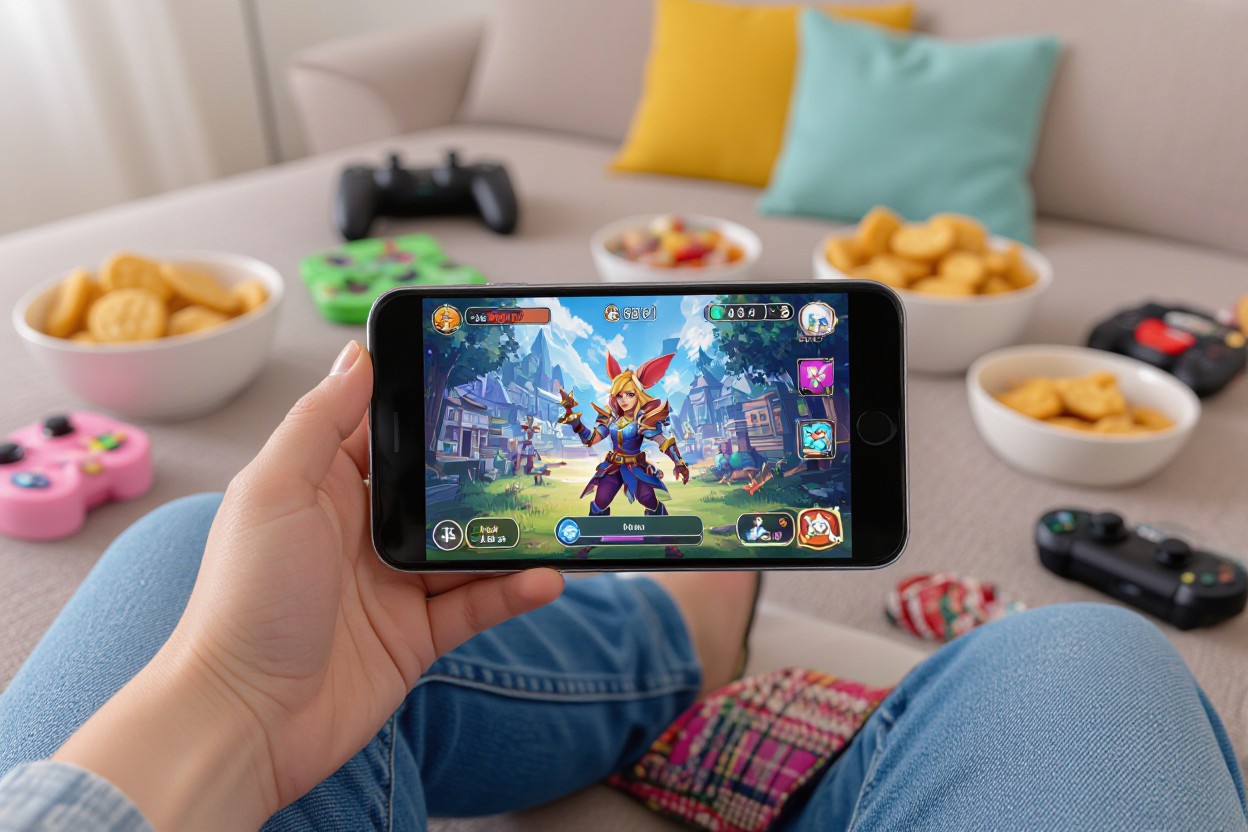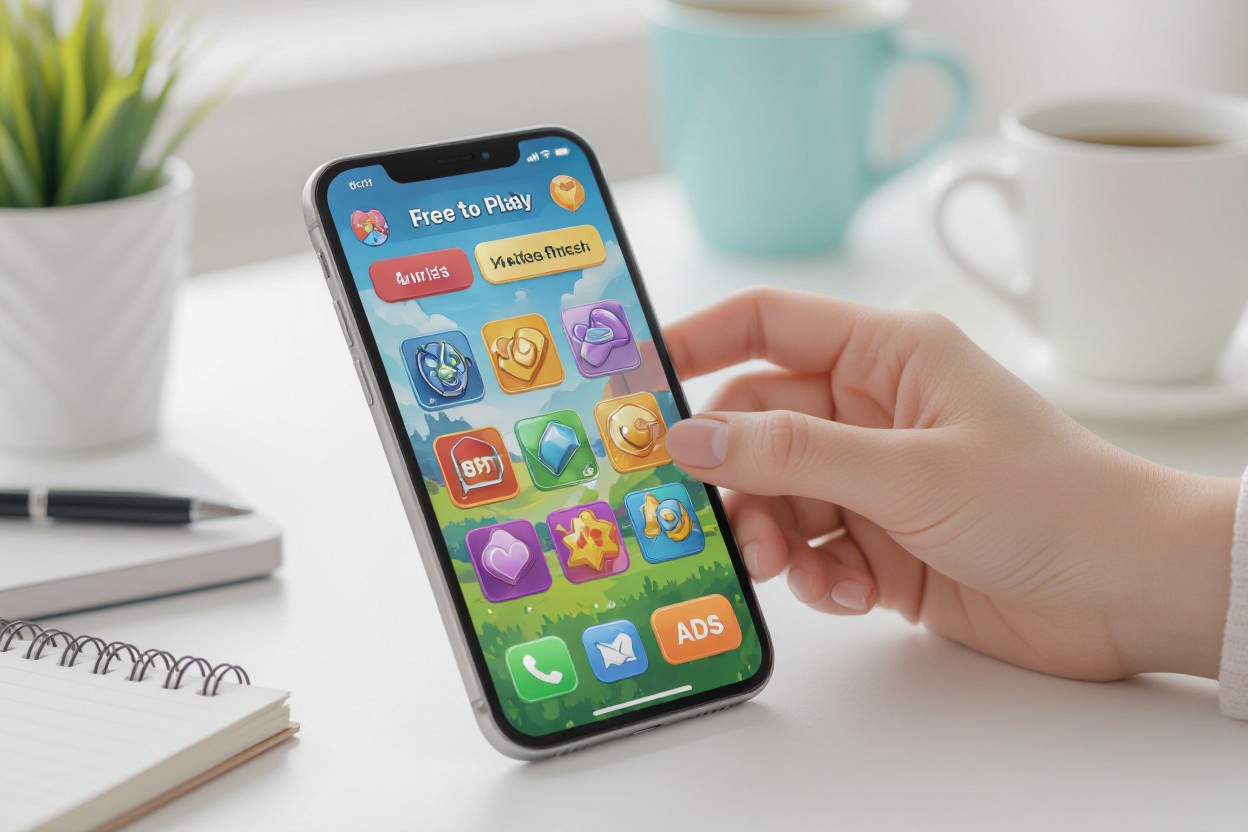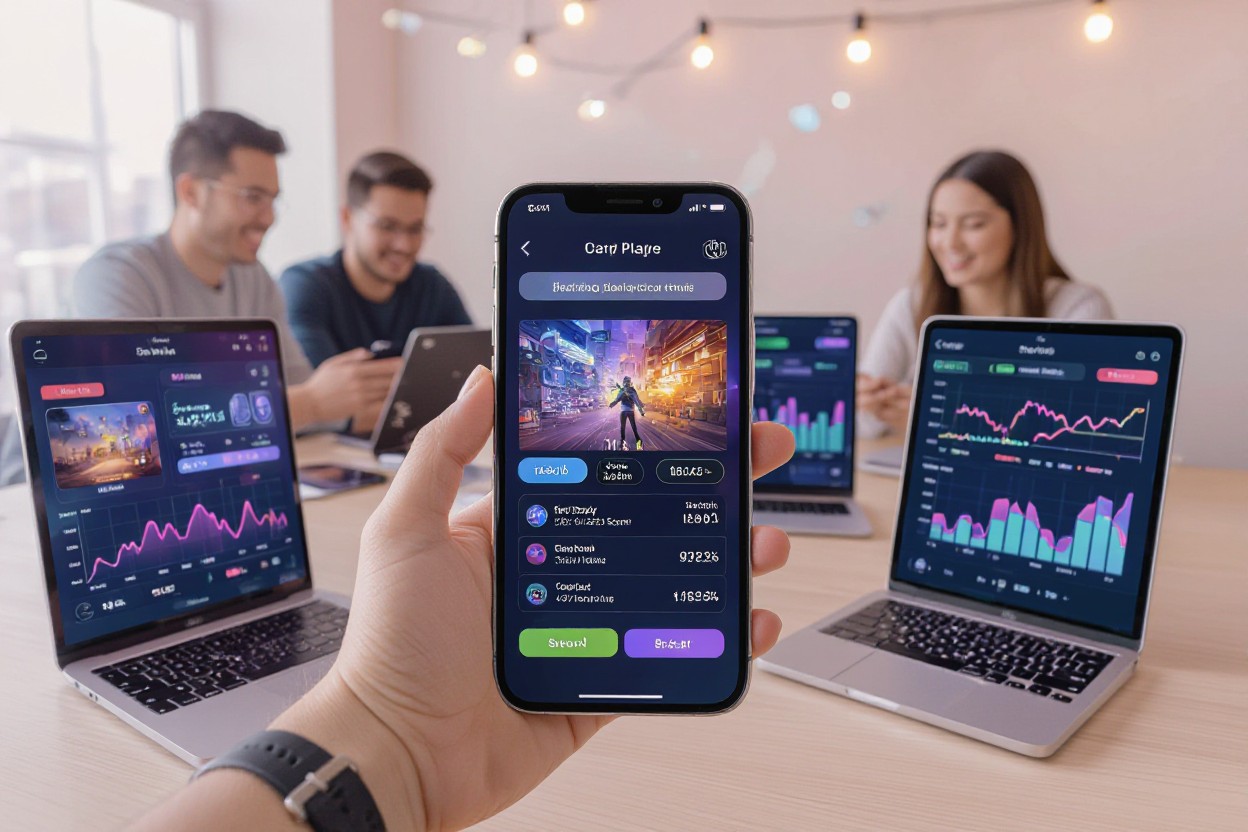Overwhelmed by the number of free mobile games flooding your app store? You might wonder how these games generate billions in revenue without charging a dime to download. Behind their “free” facade lies a sophisticated business model designed to monetize your engagement. Through carefully crafted systems like microtransactions, battle passes, and premium cosmetics, these games tap into your desire for progression and personalization. As you dive deeper into these virtual worlds, you’ll discover how developers have mastered the art of turning free players into paying customers.
The Roots of Free-to-Play: How F2P Emerged from the Internet’s Playground
The Birth of F2P in Gaming Cafes
South Korean gaming cafes revolutionized the F2P model in the late 1990s. With high-speed internet still a luxury in many homes, these cafes offered gamers a place to play for hourly fees. Game developers started offering their titles for free to cafe owners, making money instead through in-game purchases. MapleStory and Nexon’s other titles pioneered this approach, proving that players would spend money on virtual items while playing otherwise free games.
Global Expansion and the Shift from Subscriptions to F2P
The success of Asian F2P games caught Western developers’ attention by the mid-2000s. Companies like Riot Games took inspiration from this model, launching League of Legends in 2009 as a free title with microtransactions. The shift accelerated when major MMOs like Star Wars: The Old Republic and Lord of the Rings Online switched from subscription-based models to F2P, seeing dramatic revenue increases.
These transitions revealed compelling numbers: Lord of the Rings Online tripled its revenue after going F2P in 2010, while Star Wars: The Old Republic saw a 140% increase in new players just months after its F2P switch in 2012. The success sparked a domino effect, with major publishers like EA and Ubisoft developing their own F2P titles. You can trace this evolution through games like Team Fortress 2, which transformed from a paid title to F2P and saw its player base grow twentyfold.

The Art of Attraction: What Makes F2P Games Irresistible
Free Access and the Low Barrier to Entry
You can download and start playing most F2P games instantly without spending a dime. This zero-cost entry point removes the traditional purchasing hesitation, allowing you to try multiple games without financial risk. Games like Fortnite and Genshin Impact leverage this model perfectly – you get immediate access to their core gameplay loops, stunning visuals, and basic features completely free.
Psychological Hooks: Engaging Players Without Charging Them Upfront
F2P games employ sophisticated psychological techniques to keep you engaged. Daily rewards, limited-time events, and social features create powerful gameplay loops that trigger dopamine releases. Your brain starts associating the game with positive rewards, making you more likely to return day after day.
These psychological mechanisms work through carefully crafted systems. Time-gated content makes you wait for rewards unless you pay to speed things up. Social pressure through guilds and friend lists encourages regular logins. Achievement systems provide constant positive feedback, while battle passes create FOMO (fear of missing out) with exclusive rewards. Games like Candy Crush Saga use lives systems to create artificial scarcity, making each play session feel more valuable and tempting you to pay to continue playing.

Monetization Strategies Unveiled: How F2P Games Cash In
Free-to-play games employ multiple revenue streams simultaneously, creating a complex web of monetization that drives billions in annual revenue. While players never need to spend money to enjoy the basic game, carefully crafted systems encourage optional spending through both direct and indirect methods.
Ad Revenue: The Traditional Yet Effective Model
You’ll encounter various ad formats while playing F2P games – from banner ads to rewarded video content. Games like Candy Crush Saga generate substantial income by offering players extra lives or bonus items for watching short video advertisements. This model proves particularly effective on mobile platforms, where players often prefer watching ads over spending real money.
In-App Purchases: A Controversial Cash Cow
The backbone of F2P revenue comes from in-app purchases, where you can buy virtual items, currency, or advantages using real money. Games like Fortnite have mastered this approach, generating over $9 billion in revenue through cosmetic items alone.
Your purchasing decisions in F2P games are influenced by carefully designed systems that create artificial scarcity and time pressure. Limited-time offers, exclusive items, and tiered pricing strategies tap into psychological triggers like FOMO (Fear of Missing Out). Popular games like Genshin Impact use “gacha” mechanics – randomized rewards that might require multiple purchases to obtain desired items. These systems can lead to significant spending, with some players, known as “whales,” spending thousands of dollars monthly.

Innovations in Revenue: Beyond Ads and Purchases
Free-to-play games have evolved beyond simple microtransactions and ad revenue, creating sophisticated monetization strategies that blend seamlessly into gameplay experiences. Modern F2P titles now incorporate multiple revenue streams simultaneously, from exclusive content partnerships to subscription models, maximizing earnings while maintaining player engagement.
Subscriptions and VIP Passes: Building a Loyal Player Base
Monthly battle passes and VIP subscriptions transform casual players into dedicated community members. Games like Fortnite and PUBG Mobile offer season passes ranging from $10 to 15, providing exclusive cosmetics, bonus experience points, and premium challenges. These recurring revenue models give you steady rewards while generating predictable income for developers a win-win that keeps players invested long-term.
Leveraging Brand Partnerships and Product Placement for Profit
Major brands now view gaming as a prime advertising channel, partnering with popular titles to reach millions of engaged players. From Nike skins in Fortnite to KFC restaurants in PUBG Mobile, these collaborations generate substantial licensing fees while adding authentic real-world elements to virtual environments.
You’ll find these partnerships taking various creative forms – McDonald’s sponsoring in-game events in Pokémon GO, Travis Scott hosting virtual concerts in Fortnite, or Mercedes-Benz cars appearing in Mario Kart 8. These deals often range from $250,000 to several million dollars per campaign. The key to success lies in selecting partnerships that feel natural to the game’s universe while providing value to players through exclusive content or enhanced experiences.
The Ethics of Gameplay: Balancing Profits with Player Experience
Game developers walk a tightrope between monetization and player satisfaction. While free-to-play games need revenue streams to survive, aggressive monetization tactics can alienate players and damage brand reputation. The most successful F2P games find this balance by offering genuine value through optional purchases while keeping core gameplay accessible to non-paying users.
The Data Dilemma: Selling Player Information
Your gaming habits generate valuable data that companies can monetize. From your preferred play times to your spending patterns, developers collect behavioral information to optimize games and create targeted advertising profiles. Major publishers like Zynga and King have faced scrutiny for sharing player data with third-party advertisers, raising questions about privacy and transparency in the F2P model.
The Debate Over Microtransactions and Pay-to-Win Models
Microtransactions range from cosmetic items to gameplay advantages, with the latter sparking intense debate in gaming communities. Games like EA’s Star Wars Battlefront II faced massive backlash for implementing systems where paying players gained significant competitive edges. This controversy highlighted the fine line between profitable monetization and predatory practices.
The impact of pay-to-win mechanics extends beyond player frustration; it affects game design fundamentals. Developers often artificially create pain points or progression walls to encourage purchases. Games like Clash of Clans implement waiting timers that you can bypass with premium currency, while others like Diablo Immortal gate powerful equipment behind randomized purchases. These practices have led to regulatory scrutiny, with countries like Belgium and the Netherlands banning certain forms of loot boxes in games.
Summing up
Drawing together, you can see how free-to-play games employ multiple revenue streams to generate profits while maintaining their no-cost entry point. Whether you’re spending on cosmetic items to customize your character, purchasing time-savers to progress faster, or subscribing to battle passes for exclusive content, these games have mastered the art of optional monetization. Your gaming experience remains free, but the carefully designed psychological triggers and social elements encourage you to invest in these games, making them highly profitable for developers despite their free-to-play nature.